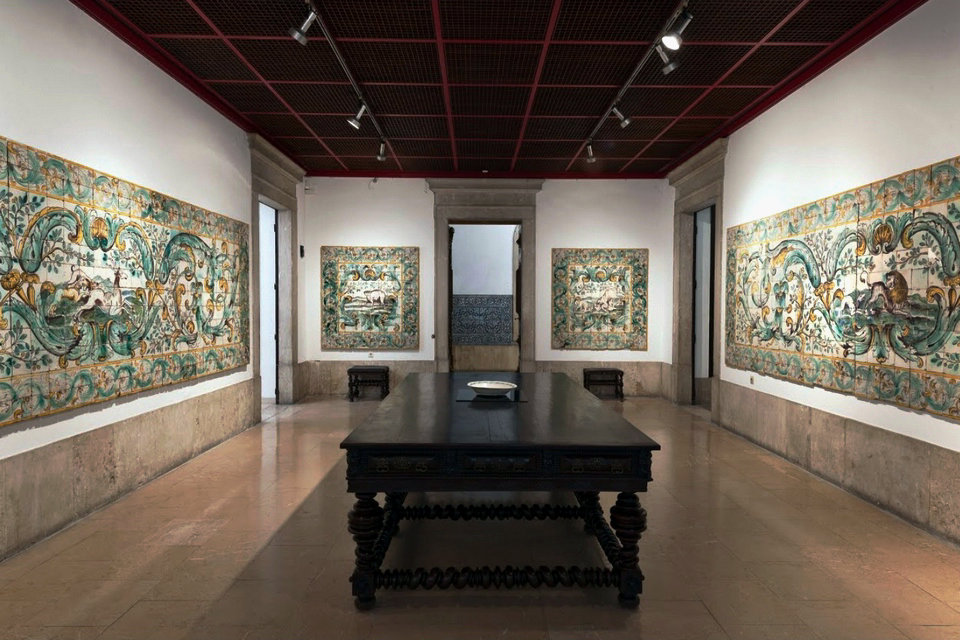Room of the Praia Palace, National Tile Museum of Portugal


The set of six, two larger and six smaller panels came from the long-gone Praia Palace in Belém, Lisbon. They are now placed in the so-called Hunting Room, a space in the National Azulejo Museum where its founder, João Miguel dos Santos Simões, wished to recreate a 17th century ambience.
In May 1962, when the then Azulejo Museum was an outpost of the National Museum of Ancient Art, these panels were already in this room, then called “Room of the Belém Azulejos”. Given the ornamental motifs represented and the palette used these azulejos have great affinity with some that still decorate the Palace of the Counts of Calheta, also in Belém. They were most probably painted in the same as yet unidentified pottery in Lisbon. All the panels in this series show hunting scenes between animals, a central motif that is surrounded by vigorous scrolls and acanthus volutes, painted yellow and copper green, a colour used by the Lisbon potteries in the last years of 17th century polychromy, in a further effort to renew production.
As a matter of fact we are here in the presence of extremely skilled examples of a period in the transition of taste, highlighting a proto-Baroque aesthetic that announces what were to be the major scenographies on ceramics of the first half of the 18th century. The iconographic source on which one of the panels in this set was based, where two dogs attack a bull, has been identified: it is engraving 18 of the Venationes Ferarum, Avium, Piscium series printed by Philippe Galle from drawings by Johannes Stradanus.
National Azulejo Museum
The National Tile Museum of Portugal, is an art museum in Lisbon, Portugal dedicated to the azulejo, traditional tilework of Portugal and the former Portuguese Empire, as well as of other Iberophone cultures. Housed in the former Madre de Deus Convent, the museum’s collection is one of the largest of ceramics in the world.
The Museu Nacional do Azulejo is housed in the former Convent of Madre de Deus founded in 1509 by Queen Leonor. Its collection presents the history of glazed tiles in Portugal, from the second half of the XV Century to the present day, proving that the tile remains a living and an identity expression of Portuguese culture.
Occupying various spaces in the building’s former convent wings, MNAz’s permanent exhibition documents the history of tile in Portugal from the 16th century to the present.
In close connection with the presented tile heritage, other ceramic objects belonging to the museum’s collections are integrated into the expository discourse.